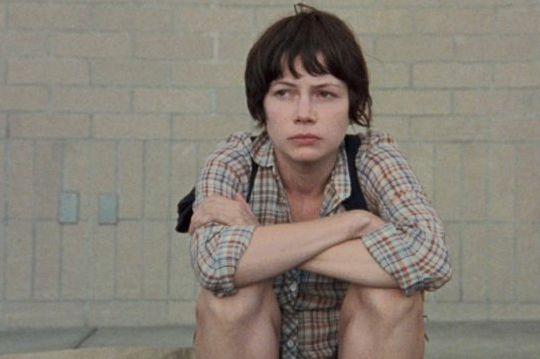Wendy and Lucy

Synopsis
"Scarcity is a defining logic and theme of Reichardt’s films, equally expressed in their carefully distilled stories as in the modest productions that resourcefully glean complex meaning from each measured performance and location. Wendy and Lucy is exemplary here for its transformation of a streamlined narrative (adapted from a Jon Raymond story) of a young woman and her dog into a vivid portrait of post-Katrina America that soberly contemplates the fine and frightening line between barely getting by and dire poverty. The well-deserved critical acclaim that greeted Reichardt’s minimal masterpiece was helped, no doubt, by the presence of a deglamorized Michelle Williams in an admirably understated turn as the proud Wendy, who is convinced, despite many signs to the contrary, that a new future lies in her waylaid and increasingly difficult journey to Alaska and the promise of a cannery job. The presence, and sudden absence, of Wendy’s dog, Lucy – Reichardt’s own beloved pet – becomes a poignant test of Wendy’s resolve. A high point of Reichardt’s career, Wendy and Lucy also stands as a defining work of the neo-realist filmmaking that transformed American independent cinema in the early 2000s." – Harvard Film Archive
"There’s a Fassbinder film that I was thinking of all the time we were making Wendy and Lucy and I don’t remember the name of it. I think he made it for TV. It’s the story of a guy who pretends he goes to work every day but he’s really lost his job, and he doesn’t tell his wife. Instead of going to a job he goes out and spends money every day. You’re just with him as he’s getting deeper and deeper in debt. He keeps buying stuff to impress his wife so you know when the bottom falls out, his marriage will be going with it. As the film goes on, you take on his debt like it’s your own. I was trying to get at something like that with Wendy." – Kelly Reichardt in interview with Gus Van Sant